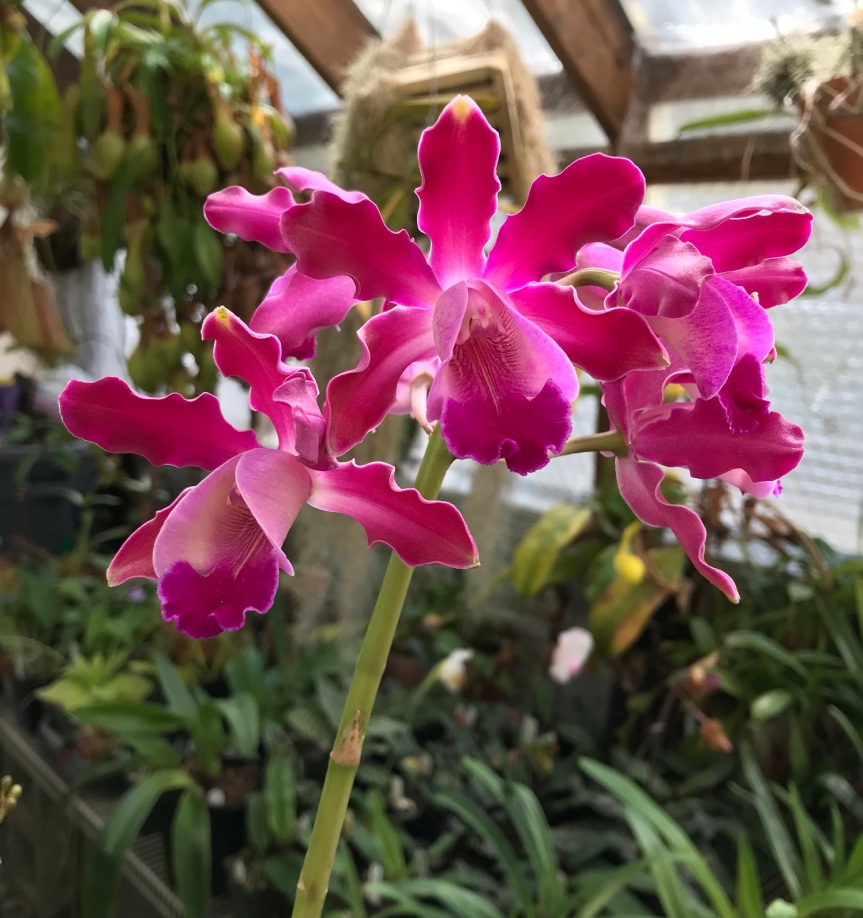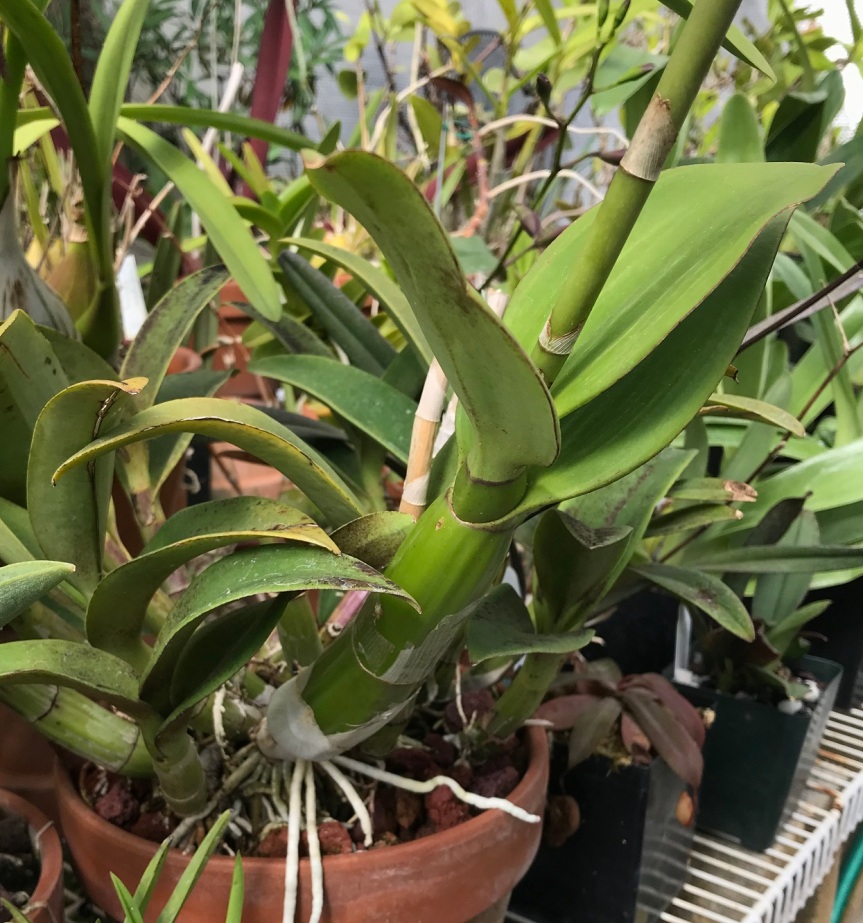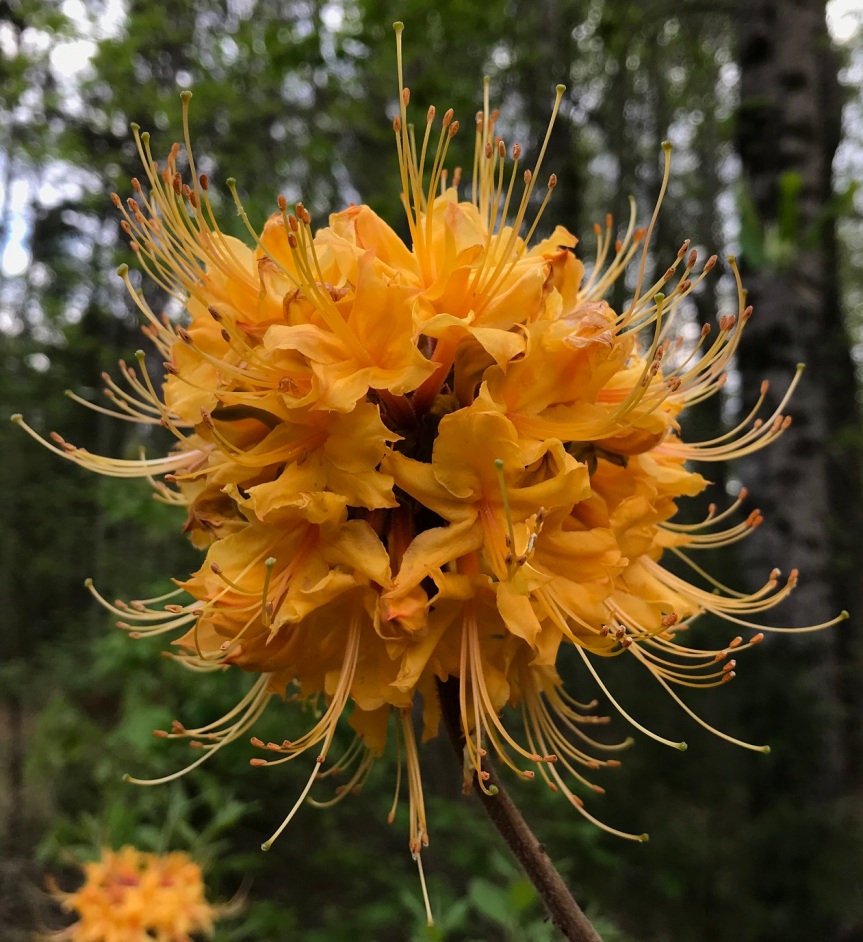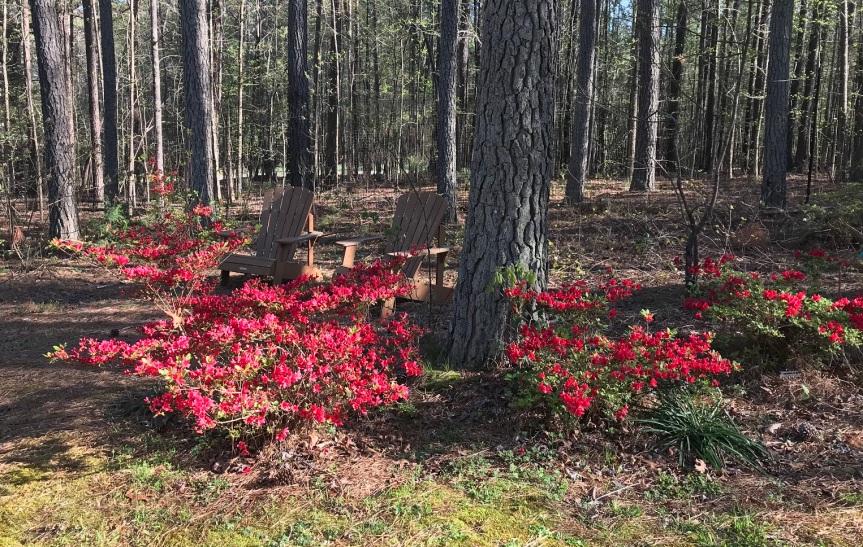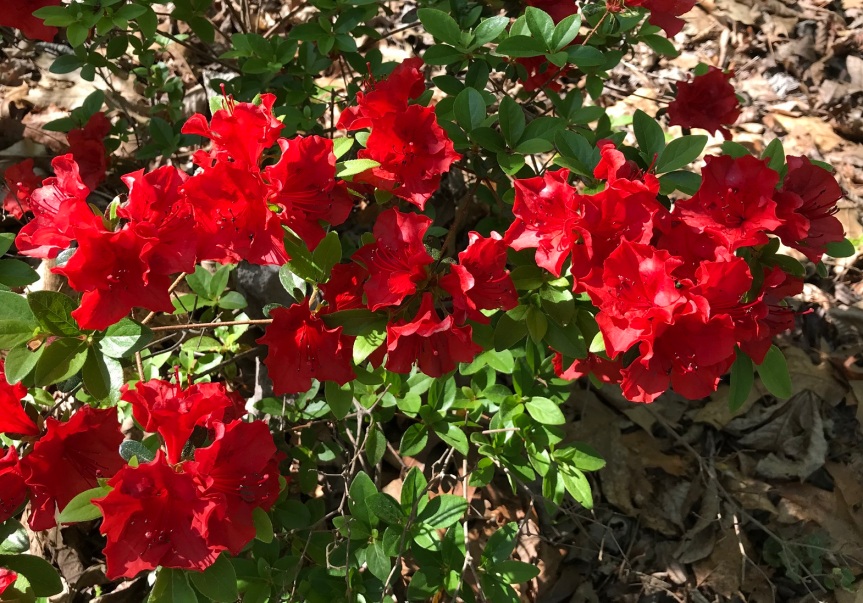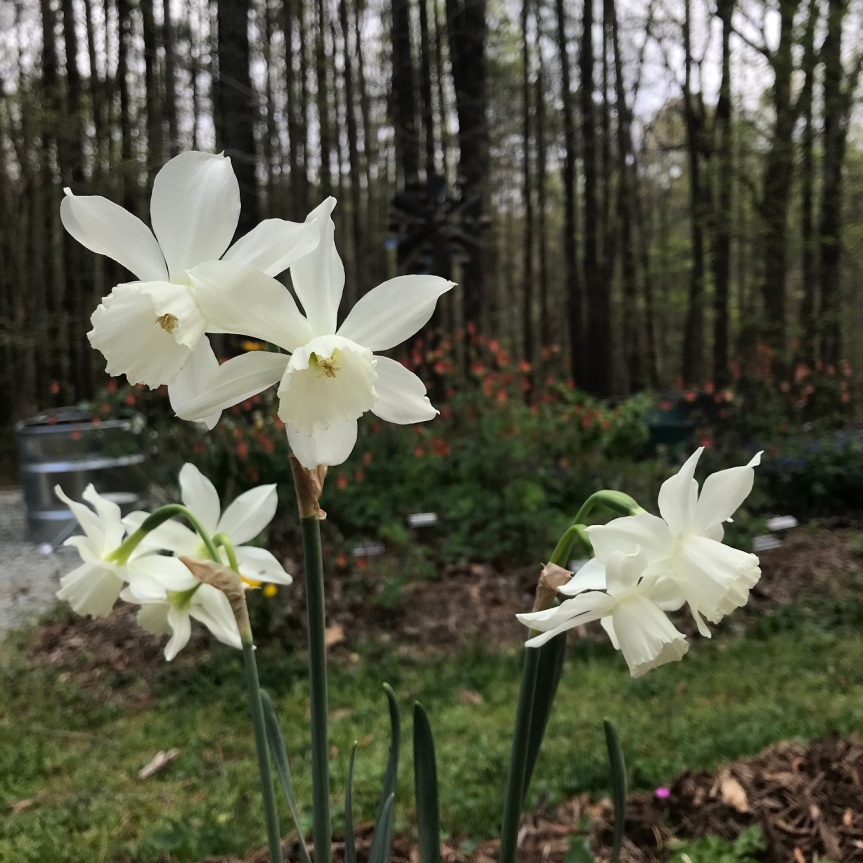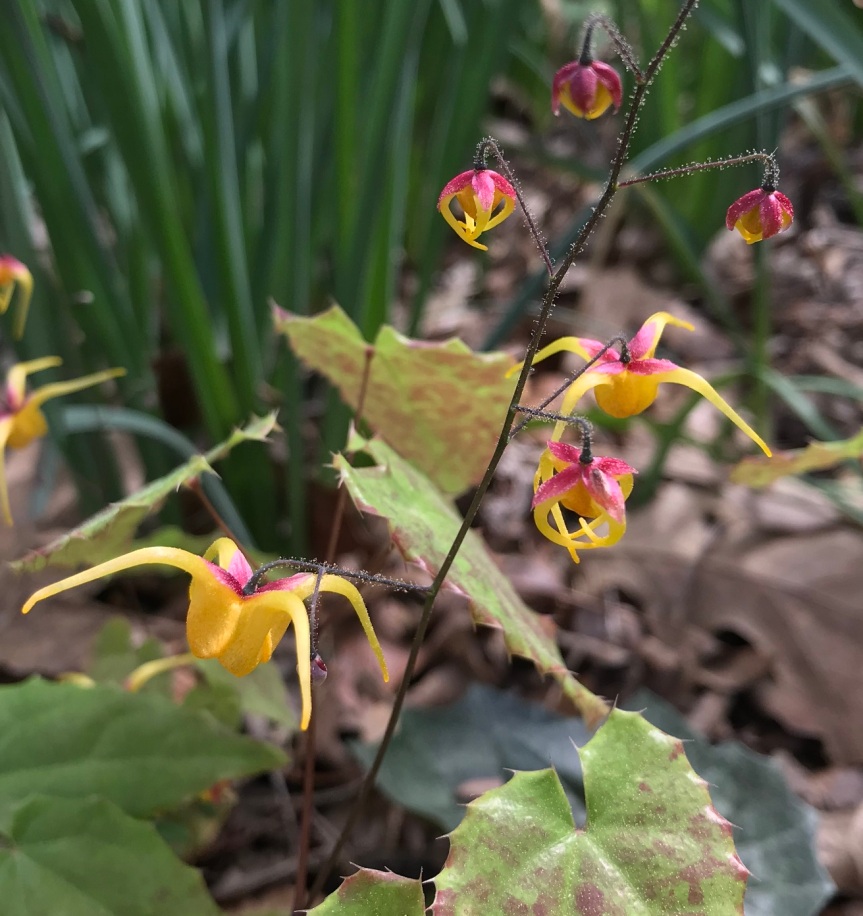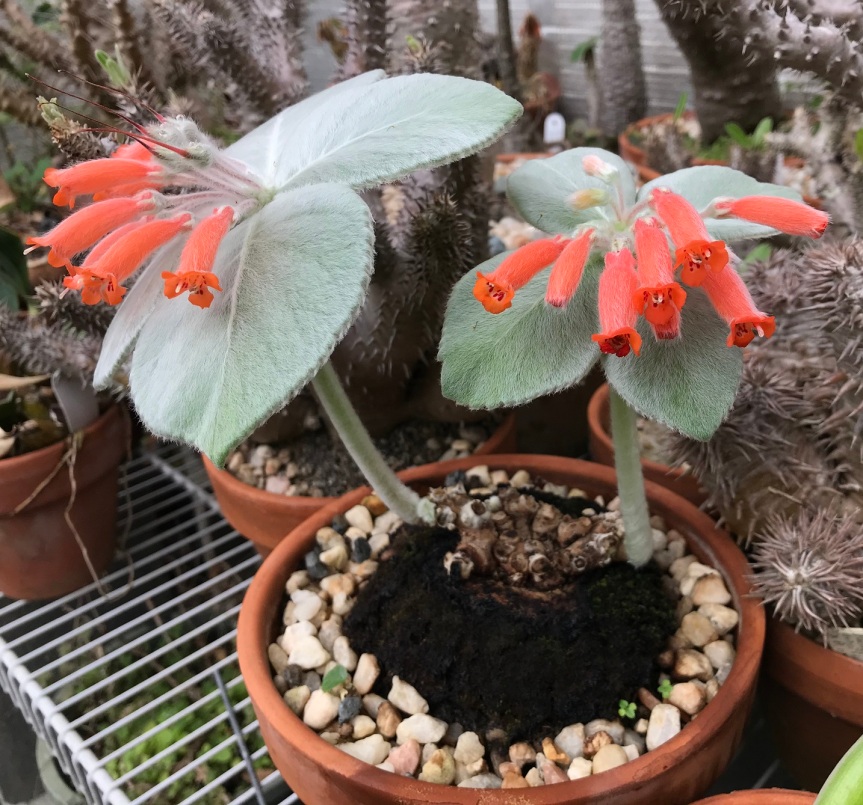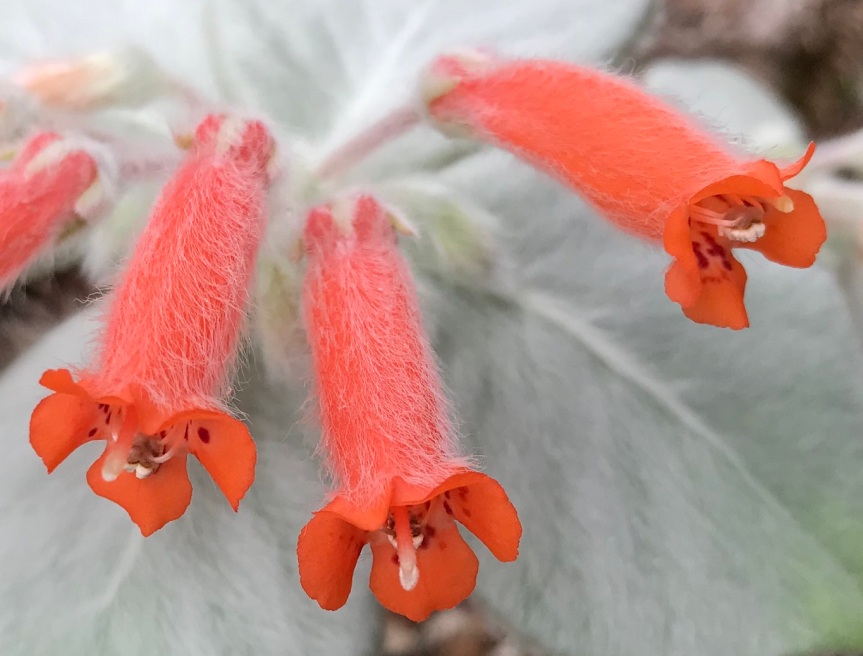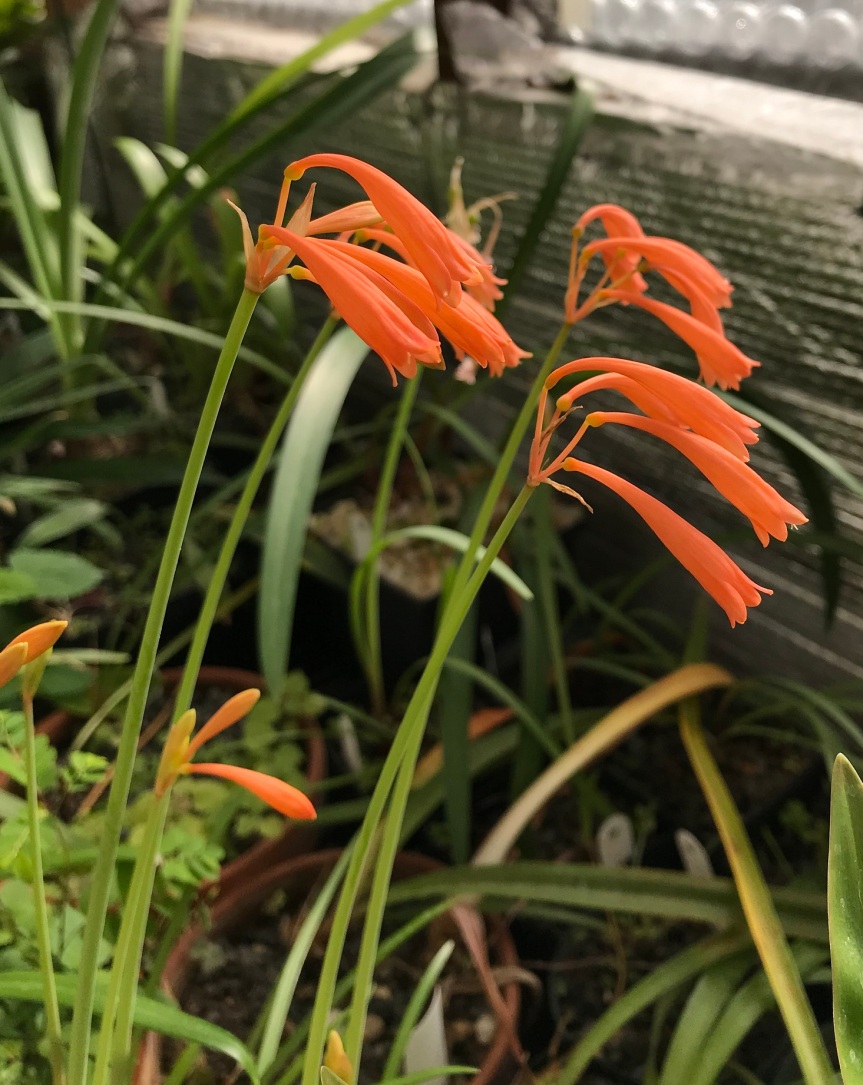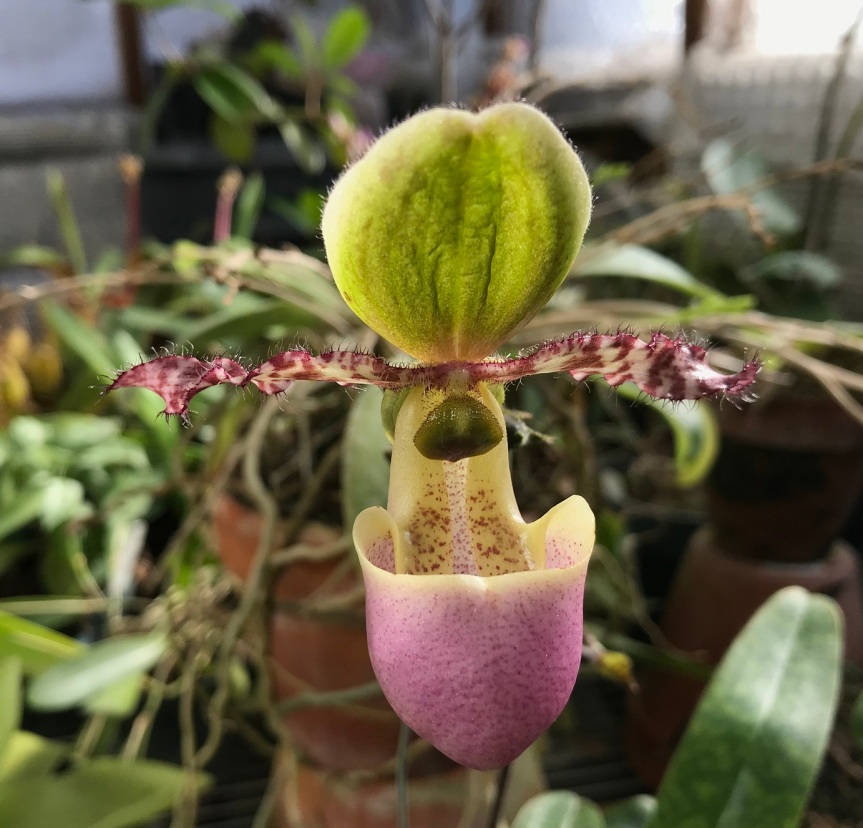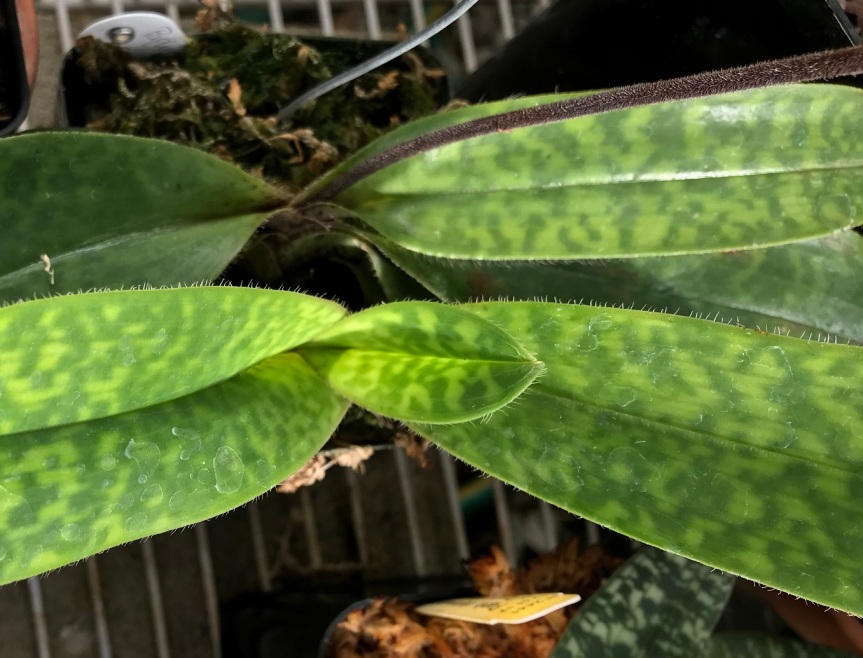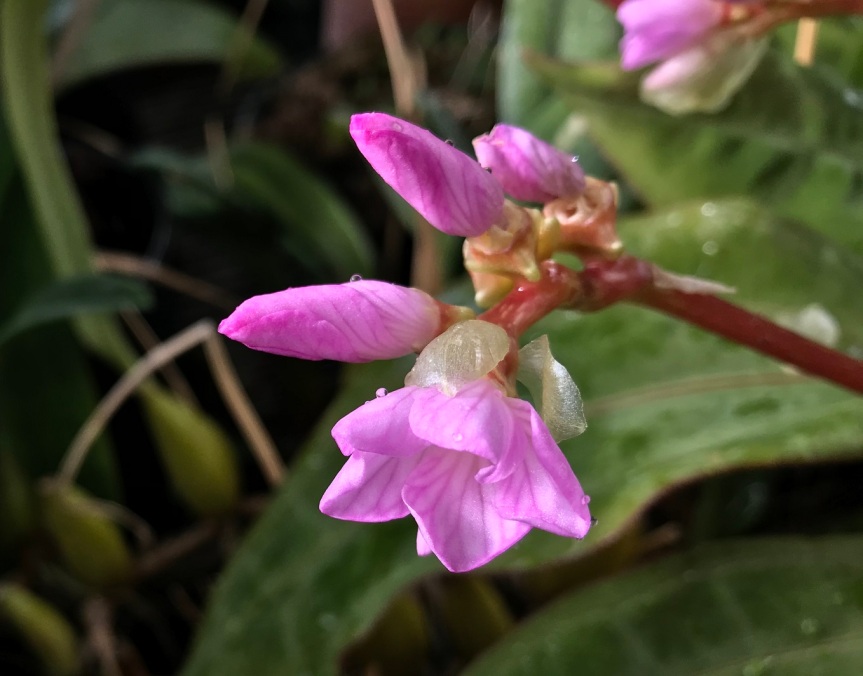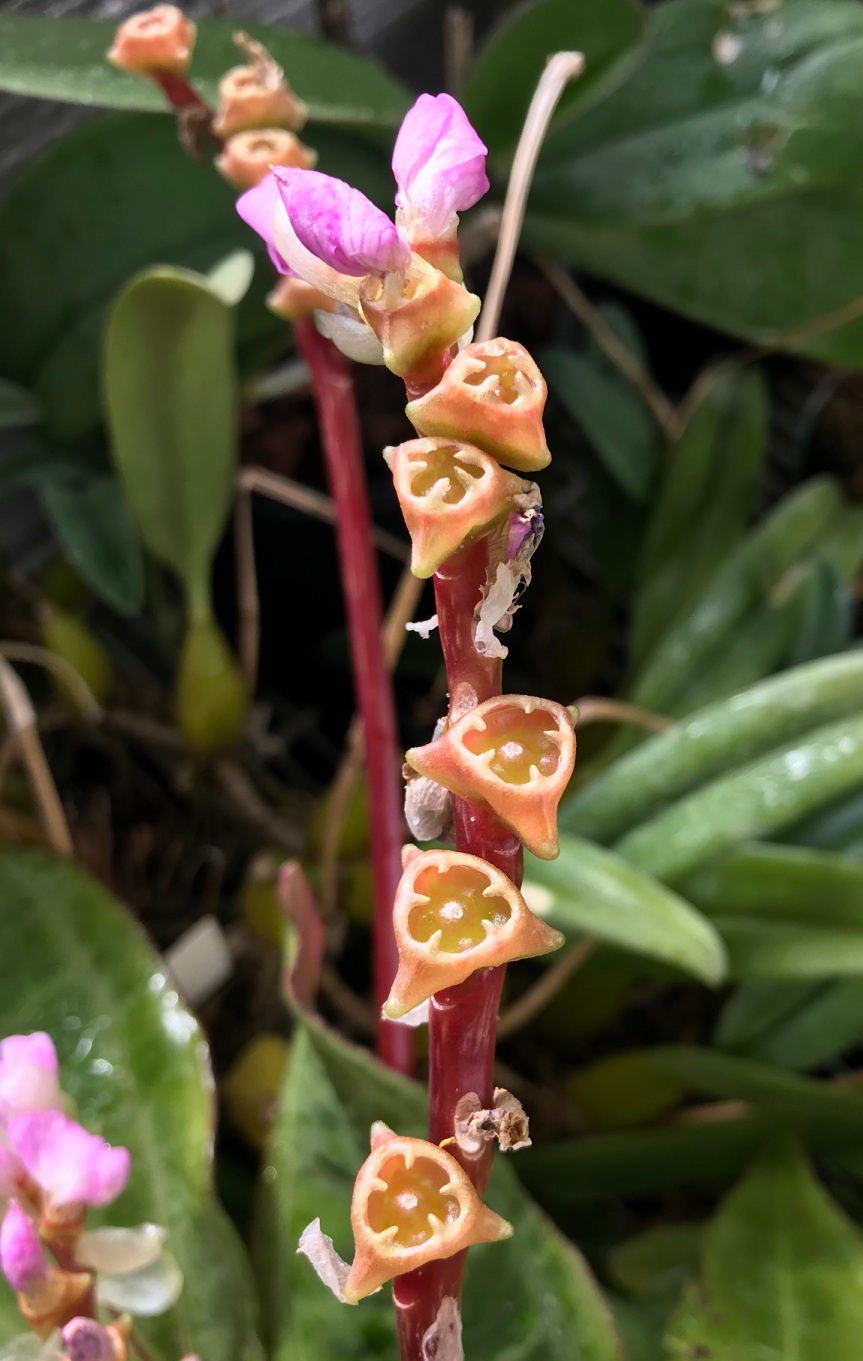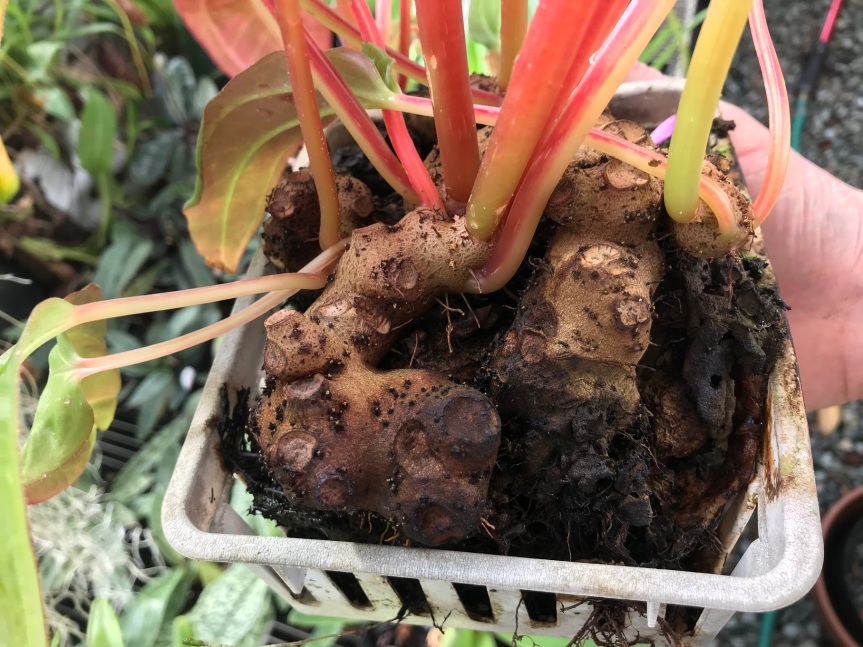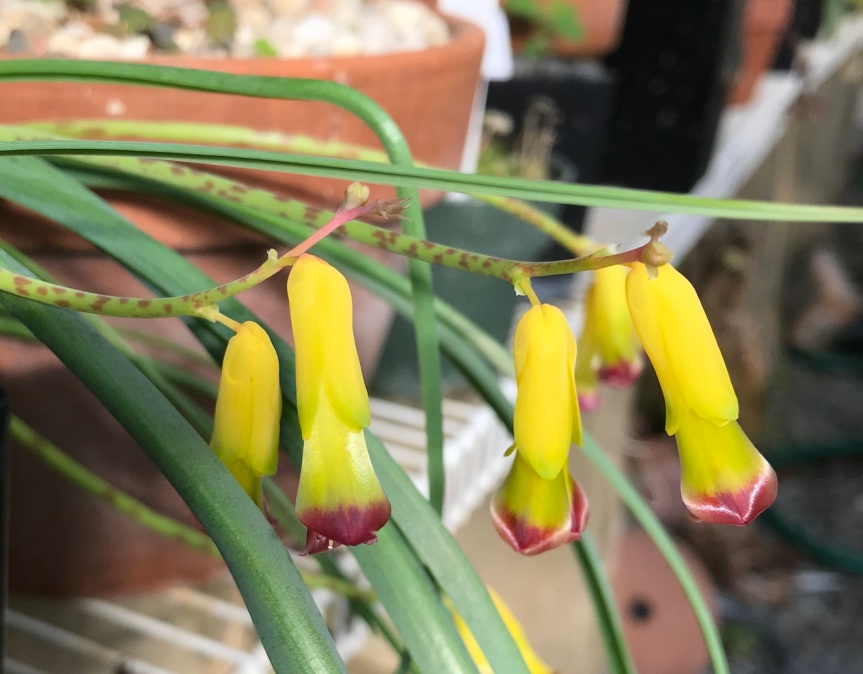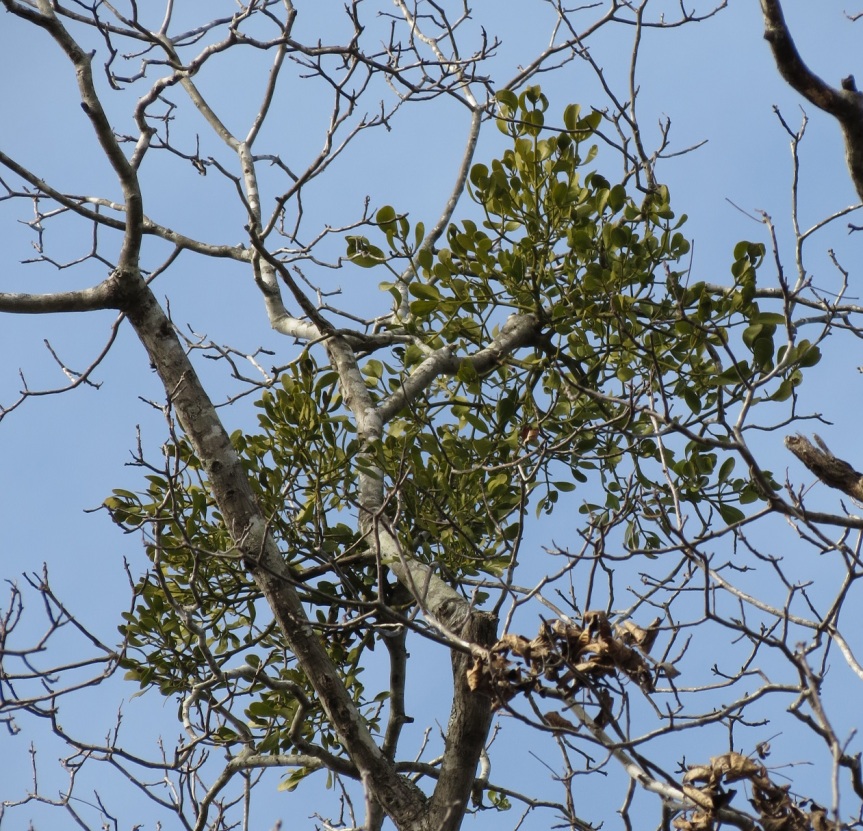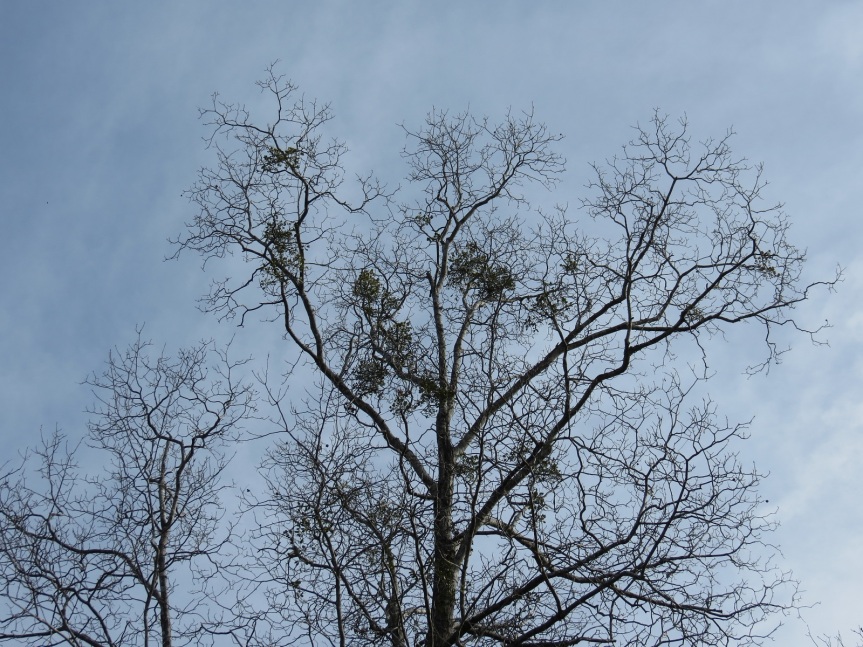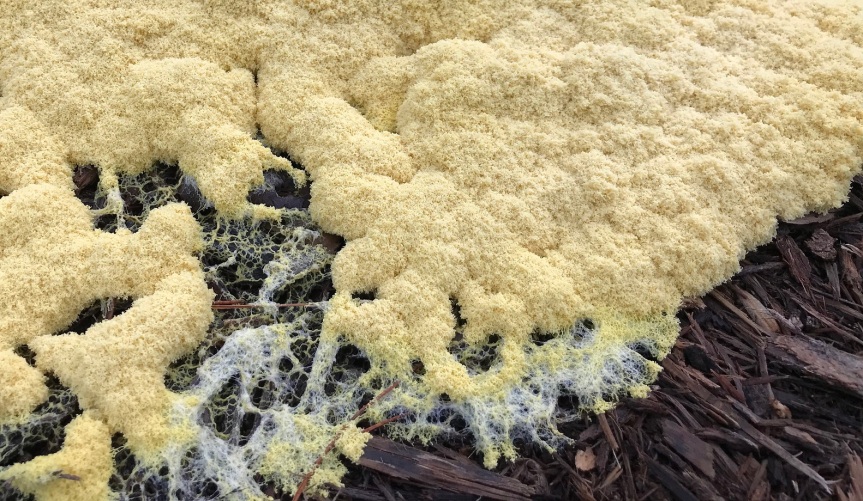The last ten days or so have been warm enough at night that I have finally felt confident to start moving tropical plants out to their summer quarters. The hummingbirds also arrived about ten days ago, and I have seen the year’s first aerial dogfights around the feeders. Horticulturally, we have entered the “great green interlude,” the period after the peak of spring bulb and azalea flowering, but before the blooming of the summer perennials. Although the first roses are opening, and there are still a smattering of bulbs and orchids flowering, the predominant color in my garden is the green of fresh new leaves.
1. Gladiolus x byzantinus
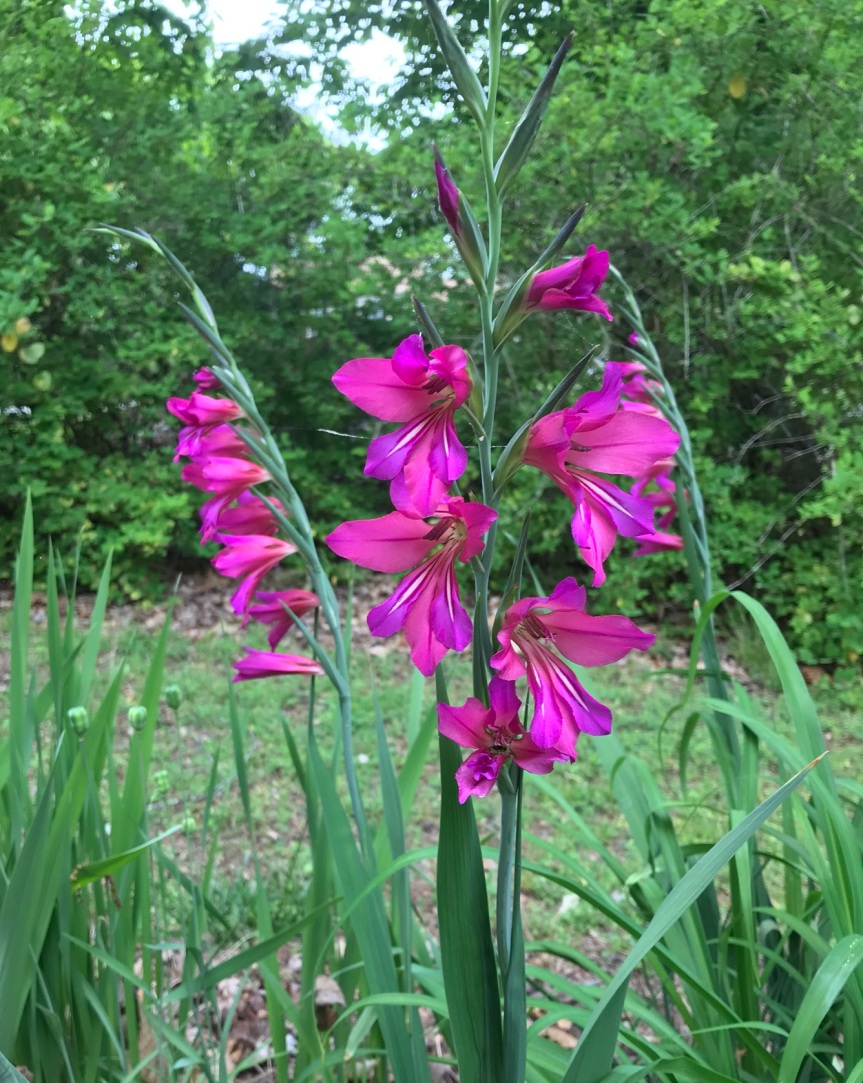
A welcome splash of bright magenta comes from half a dozen Gladiolus x byzantinus bulbs that I received in a trade with a gardener in Texas last year. This plant from southern Europe has been considered a synonym of G. communis, but Kew currently has it listed as a natural hybrid, G. dubius x G. italicus. An old heirloom bulb in southern U.S. gardens, G. x byzantinus starts growing during the winter and blooms in spring, long before the hybrids derived from African species like G. dalenii.
2. Philadelphis inodorus (Appalachian mock orange, scentless mock orange) with unusual flowers
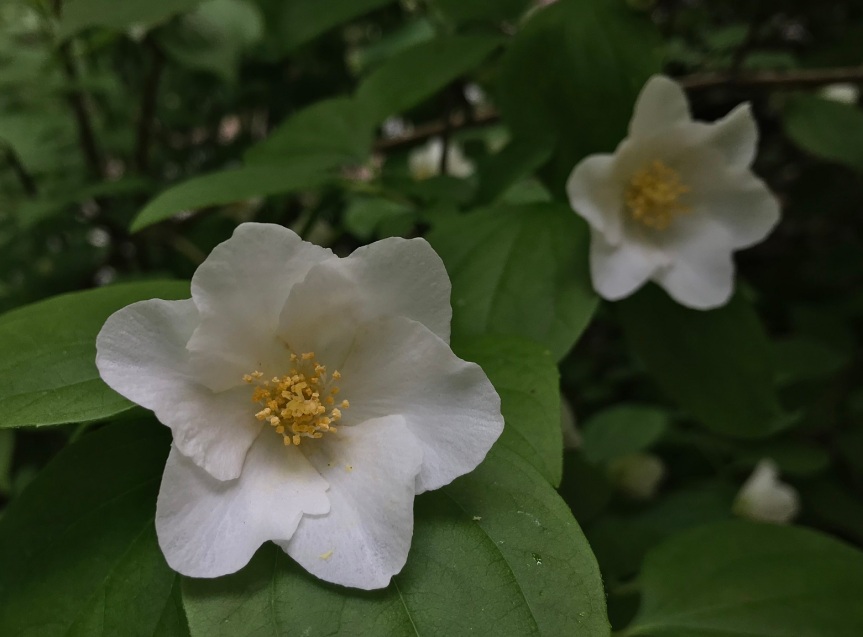
P. inodorus flowers typically have four petals, but this year I have a stem covered with six-petaled flowers. The shrub originated as five or six seedlings that I grew in a single pot, so it is possible that the unusual flowers are produced by one of the seedlings, rather than by a single branch that has sported. However, the plants are now inextricably tangled together, so the only way I’ll be able to propagate this weirdo (assuming it is stable) will be to root a cutting.
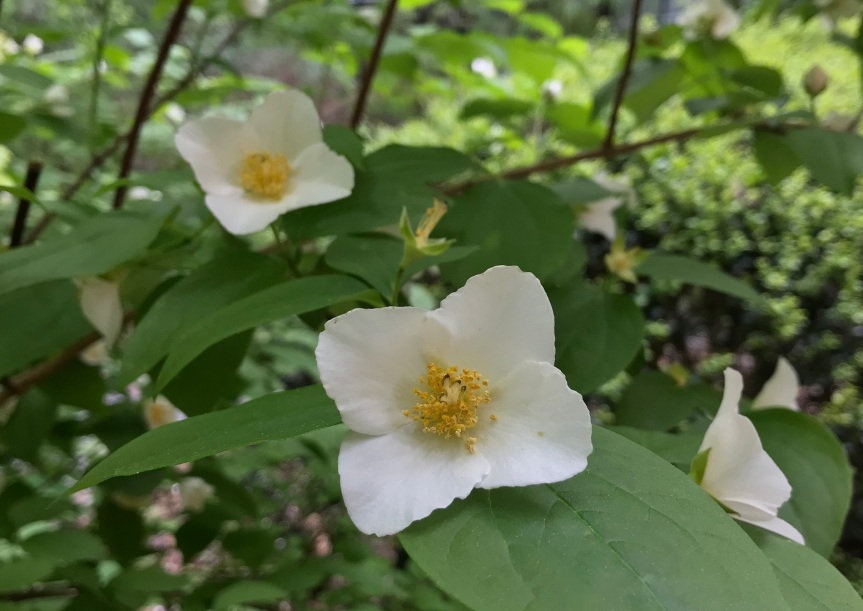
3. Bletilla striata var. albescens
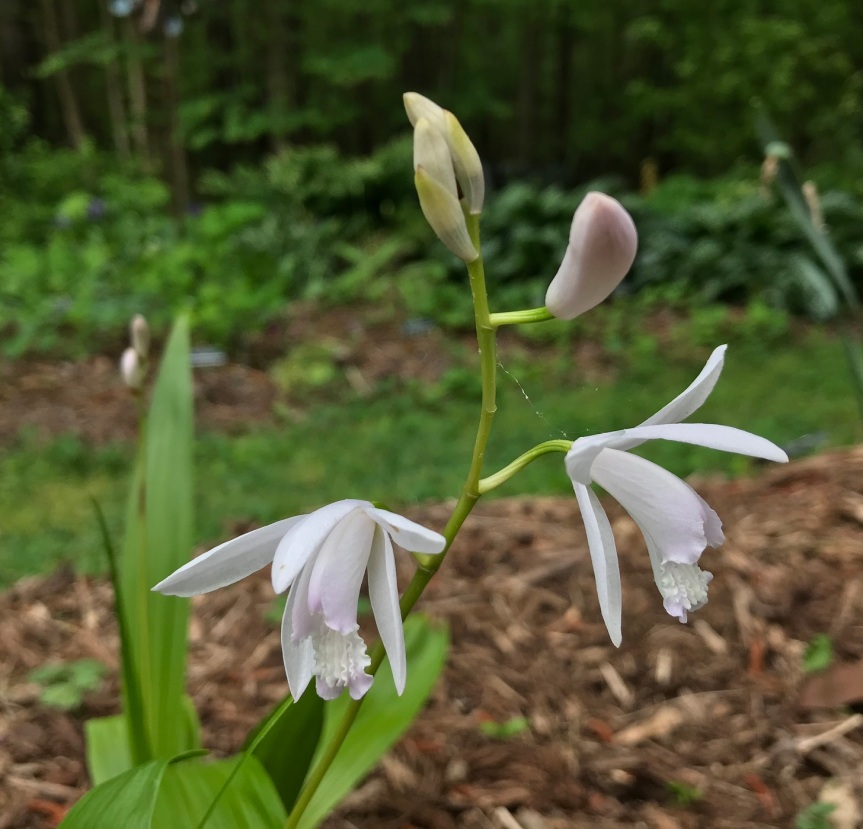
I purchased this orchid as Bletilla striata var. alba, but the flowers exhibit very faint lavender coloration on the labellum. Therefore, it would seem to be var. albescens, rather than var. alba which should have pure white flowers. It does not seem to be as vigorous as the typical colored variety, but I think it has its own delicate charm.
4. Phlox nivalis (trailing phlox, pine phlox)
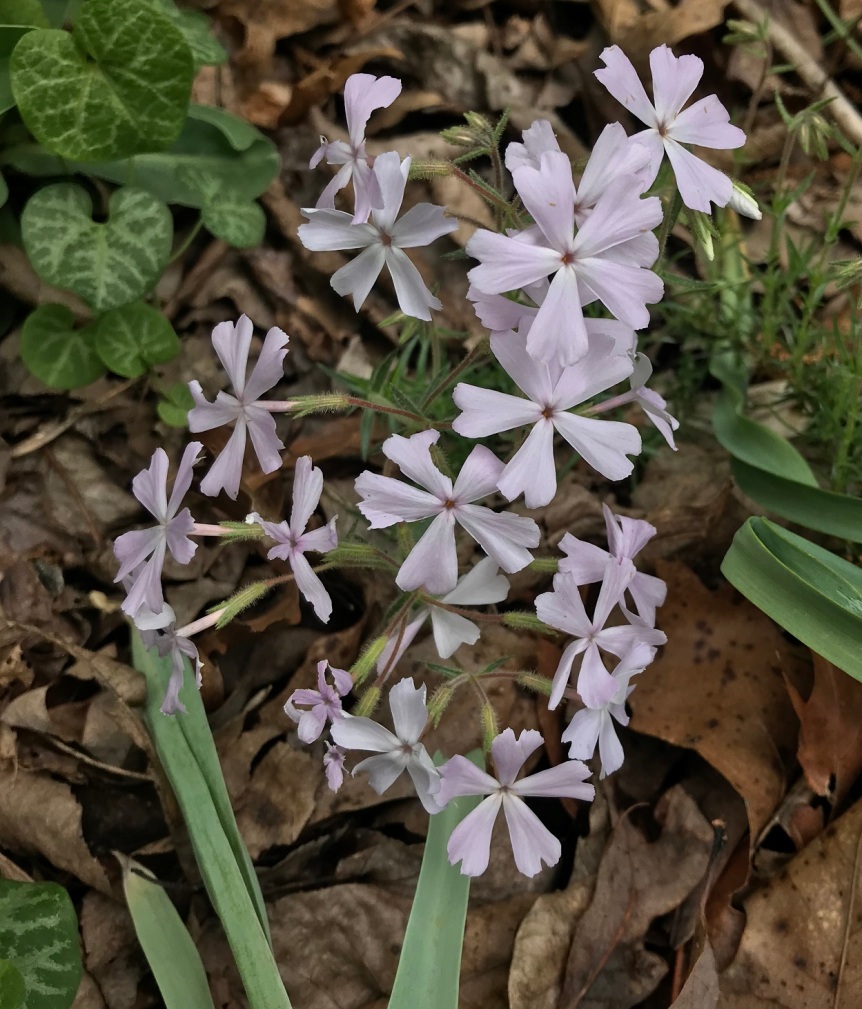
Moss phlox, P. subulata, is often sold by local nurseries as a native plant, but it is primarily a species of the northeast and midwest. In North Carolina, P. subulata is found only in a couple of counties in the mountainous west of the state. The superficially similar Phlox that grows throughout the piedmont is P. nivalis. I grew this one from a small cutting collected in Durham County.
5. A couple of sages
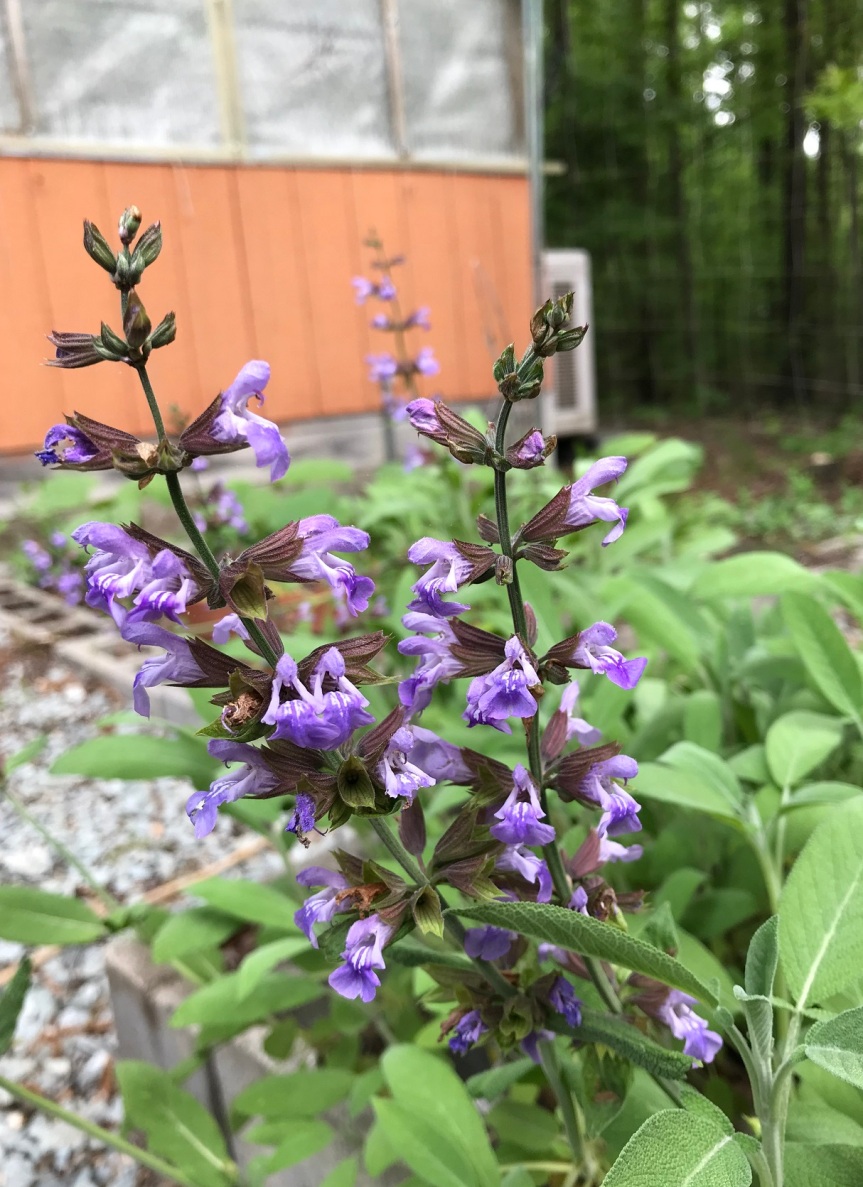
Above, Salvia officinalis (culinary sage) in our herb garden. Below, Salvia lyrata (lyreleaf sage), a common spring wildflower/weed. Unlike S. officinalis, which grows as a semi-woody shrub, S. lyrata has a rosette of soft leaves that look vaguely like a dandelion. I find S. lyrata particularly difficult to photograph, because its flowers stick out in all directions.
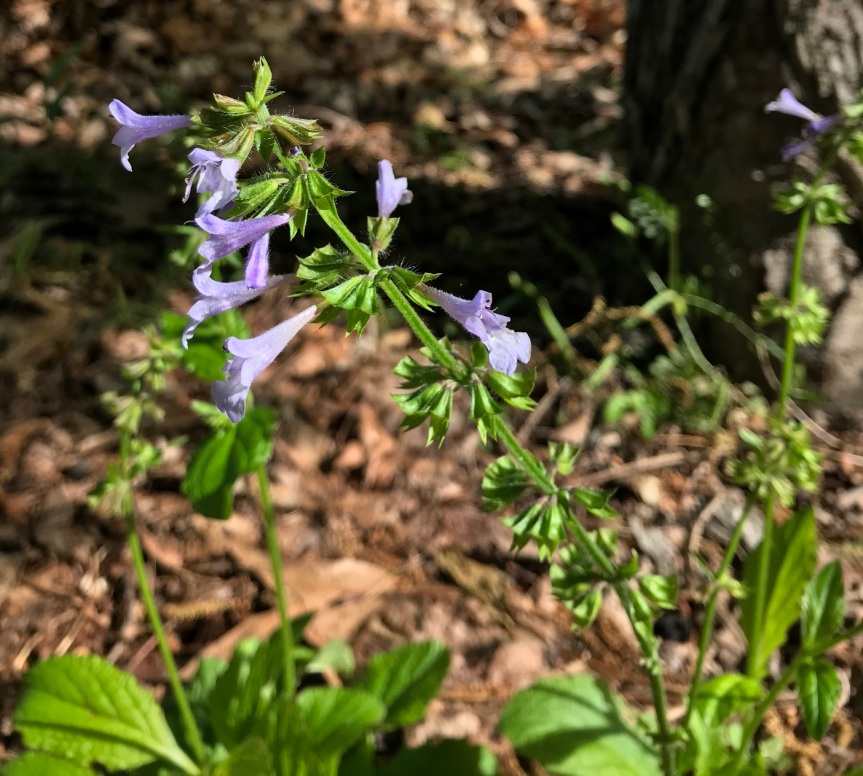
6. New plant bench
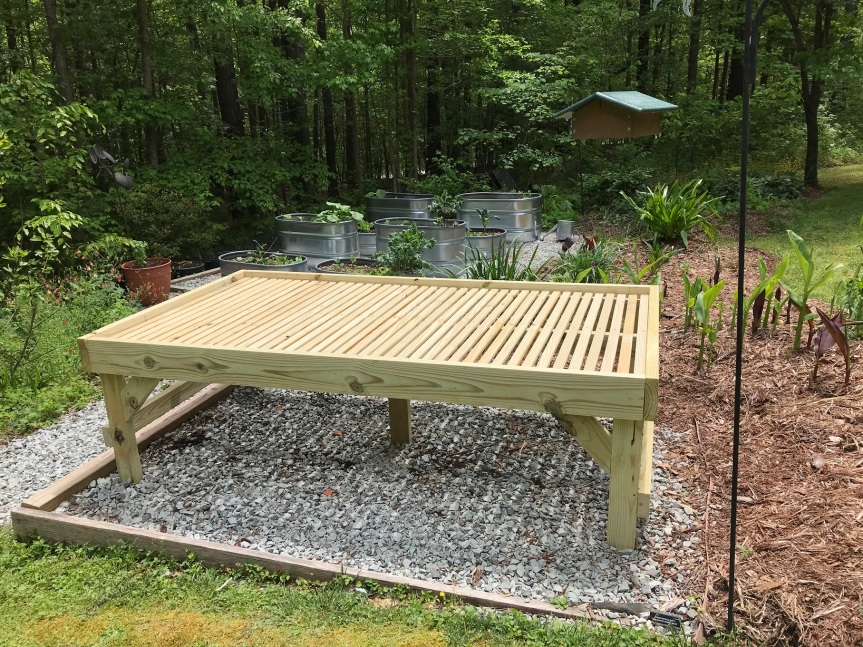
Last weekend, I built a wooden bench to house my pachypodiums and some of my tropical bulbs during the summer. The bench is 7′ long x 4′ wide x 2′ high (2.1 x 1.2 x 0.6 m) and is constructed from pressure-treated pine. It occupies the space formerly used for growing tomatoes, necessitating a search for a new place to grow that crop, but it should reduce spilled gravel and water damage on our wooden deck.
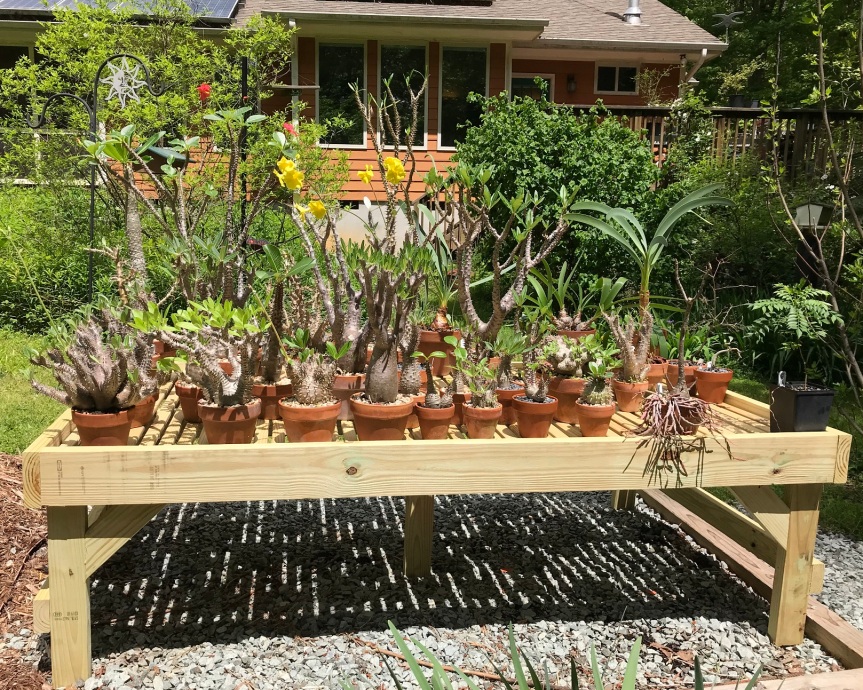
The Propagator is the host of Six on Saturday. Head over there to see his Six and find links to the blogs of other participants.

